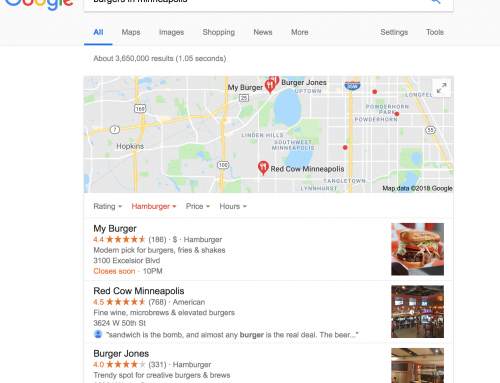THE HITS AND VIEWS RELATIONSHIP
“If you don’t drive your business, you will be driven out of business.”
-B.C. Forbes
THE DRIVER’S SEAT
Business owners face many challenges. Simply getting to the point of opening a business can be a challenge in and of itself. You have made a decision to invest your money, time, blood, sweat, and tears into doing a particular field of work. You’ve done your research and know where there is a need, a hole, in what is available. You have likely mastered what is necessary to stand apart by filling that hole. You took the risk and entered the market putting your money, and your future, where your mouth is. Now you face a new challenge: How do I use the Internet to increase my sales and grow my business? What role do hits play?
The goal of this blog is to help you on your way. Over the course of four blogs we will present simple tools you can incorporate to boost your SEO strategy and turn hits into sales. If you follow the steps in these blogs we expect three things to happen:
- You will see an increase in your sites “hits”
- You will see those hits turn into increased site visits
- You will then see those visits turn into opportunities for increased sales
It all begins the same way you started your business—transitioning from the passenger seat to the driver seat. This particular blog will outline some important distinctions before jumping into how to accomplish this feat more specifically.
TURNING HITS INTO SALES
What Are “Hits”? Why Do They Matter?
Up front it is important to note that hits are not visits. Hits work alongside visits. A hit is a file on your website. Each picture on your website page would yield a hit. The content and header would each yield hits. The average site visit yields 15 hits. You can increase hits rather easily. You just add more “things” or objects on each page. Getting visits can be a bit trickier. Hits matter because they can attract visits. When you optimize the content on each page, like making your images “search engine friendly”, you have opportunities to show up in more searches and to solidify your presence on others.
What Are “Visits”?
Depending on your website data collection software visits may vary. There are two primary types of visitors that make visits. The first is a unique visitor. This visit is logged each time a new IP address visits your page. There are some nuances that could muddy this a bit, but you are likely looking to increase unique visitors if you are looking for new (not returning) customers. There is also a general category of visitors. These statistics point to how many times someone actually arrived on one of your pages (a site visit). This includes unique and returning visitors. An important part of each visit is that it includes “browsing”. That simply means people are seeing what you’ve created.
To access the other articles in this series, use the links below:
TURNING HITS TO VIEWS TO SALES PART II: INCREASING SITE VISITS WITH IMAGES
TURNING HITS TO VIEWS TO SALES PART III: CREATING ORGANIC BACKLINKS
TURNING HITS TO VIEWS TO SALES PART IV: METRICS PROVE YOU NEED A CONTENT STRATEGY




